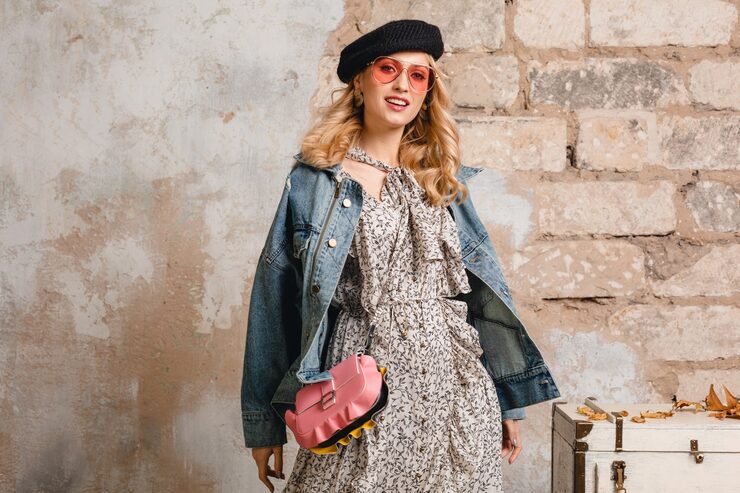Vintage clothing has always held a special place in the world of fashion. From the iconic silhouettes of the 1950s to the bold colors of the 1980s, vintage clothing brings a unique charm and individuality that modern styles often struggle to replicate. Today, vintage clothing is not just a trend but a powerful revival that appeals to fashion lovers looking for authenticity, sustainability, and a personal style statement.
The appeal of vintage clothing lies in its timeless quality and the stories each piece carries. Fashion experts like Emily Richards and James Foster often highlight how vintage clothing connects us to past eras while offering fresh inspiration for today’s wardrobes.
Why vintage clothing is more relevant than ever
The resurgence of vintage clothing is driven by many factors. Sustainability is a key reason why many shoppers turn to vintage. Buying vintage reduces waste and the demand for fast fashion, which often has a detrimental impact on the environment.
Emily Richards notes that people today are more conscious of their environmental footprint, making vintage clothing a smarter choice for eco-friendly fashion. Beyond sustainability, vintage offers uniqueness. Unlike mass-produced modern clothes, vintage pieces allow you to stand out with looks that are rarely seen elsewhere.
Popular vintage clothing trends making a comeback
Several vintage clothing trends have found their way back into the spotlight in recent years, evolving to fit modern tastes.
The classic denim jacket
A staple of vintage clothing, the denim jacket is endlessly versatile. Whether paired with floral dresses or casual tees, the denim jacket adds a cool, effortless vibe. James Foster points out that the ’80s and ’90s styles, with oversized fits and distressed detailing, are especially popular among younger fashion enthusiasts today.
High-waisted trousers and skirts
The high-waisted silhouette, prominent in vintage clothing from the ’40s through the ’70s, is making a significant comeback. These pieces accentuate the waist and elongate the legs, offering a flattering fit for many body types.
Pairing vintage high-waisted trousers with a modern crop top or a tucked-in blouse blends old and new for a chic, timeless look.
Bold prints and patterns
Vintage clothing is known for its bold prints—think polka dots, paisley, and floral designs. These patterns add personality and a pop of color to any outfit. Designers like Clara Hastings have embraced these patterns, integrating them into contemporary collections that celebrate vintage aesthetics.
How to style vintage clothing for modern appeal
One of the joys of vintage clothing is the freedom to mix eras and styles. Styling vintage clothing is all about balance and personal expression.
Start by incorporating a single vintage piece into a modern outfit. For example, a vintage blouse with contemporary jeans creates an interesting contrast. Layering is also effective; a vintage coat over a simple dress can elevate your entire look.
Emily Richards advises paying attention to fit. Vintage sizes often differ from today’s standards, so alterations might be necessary to achieve the perfect silhouette without losing the piece’s original charm.
Shopping tips for authentic vintage clothing
Finding genuine vintage clothing requires a keen eye and patience. Unlike new fashion, vintage pieces come with unique quirks, wear, and craftsmanship details.
James Foster suggests focusing on quality fabrics and stitching when selecting vintage clothing. Natural fibers like wool, silk, and cotton often indicate authenticity and durability.
Don’t shy away from thrift stores, vintage markets, or online platforms specializing in curated vintage collections. These sources provide a treasure trove of unique finds that can elevate your wardrobe.
The cultural influence of vintage clothing
Vintage clothing doesn’t just influence style; it reflects the culture and history of its era. Wearing vintage allows you to connect with different decades and social movements.
For example, the ’70s bohemian styles are closely tied to the counterculture movement, while the structured ’50s dresses echo post-war optimism.
Clara Hastings points out that understanding the historical context of vintage clothing enriches the way we wear and appreciate these pieces.
Caring for your vintage clothing collection
Maintaining vintage clothing requires special care to preserve its condition. Many vintage fabrics are delicate and prone to wear.
Store your vintage clothing in breathable garment bags and avoid plastic covers to prevent moisture buildup. Hand washing or dry cleaning, depending on the fabric, is essential to maintain color and shape.
Emily Richards recommends investing in proper hangers and avoiding overcrowding in your closet to prevent creases and damage.
Vintage clothing and sustainability: A perfect match
The vintage clothing trend aligns perfectly with the growing movement toward sustainable fashion. By choosing vintage, you reduce demand for new textile production, which can be resource-intensive.
James Foster highlights that many consumers appreciate vintage clothing not only for style but also as a statement against fast fashion’s wasteful practices.
Embracing vintage clothing helps promote circular fashion—where clothes are reused and valued rather than discarded.
Influencers and celebrities embracing vintage clothing
The popularity of vintage clothing is also boosted by celebrities and influencers who proudly showcase vintage pieces on social media and red carpets.
Stars like Florence Welch and Harry Styles often incorporate vintage clothing into their looks, inspiring millions to explore retro styles.
This visibility has helped shift vintage from niche to mainstream, encouraging more people to experiment with vintage clothing.
Learn More:

